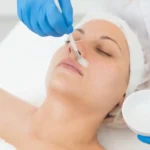THE WHAT? Procter & Gamble has announced a comprehensive plan to accelerate its fight against climate change and set a new ambition to achieve net zero greenhouse gas emissions across its operations and supply chain, from raw material to retailer, by 2040.
THE DETAILS The US FMCG manufacturer’s 2030 goals to pace its progress toward net zero have been submitted to The Science Based Targets initiative and include reducing emissions across its operations by 50 percent and reducing emissions across its supply chain by 40 percent.
The owner of Olay and Gillette has also joined the UN’s Race to Zero and Business Ambition for 1.5C campaigns.
THE WHY? The majority of consumers globally now want the brands they buy to help them live a more environmentally conscious lifestyle, P&G said. David S Taylor, Chairman, President and CEO, added, “We are fully committed to use P&G’s innovation and ingenuity to unlock new solutions to address climate change. The task ahead of us is urgent, difficult and much bigger than any single company or country. P&G is tackling these challenges head-on by reducing our footprint and leveraging our scale to foster unprecedented collaboration across our value chain.
Aesthetic medicine products are developed and regulated to meet stringent safety and efficacy standards. They are typically administered by trained healthcare professionals such as dermatologists, plastic surgeons, and specialized nurses in clinical settings. These products aim to provide effective solutions for cosmetic enhancement, skin rejuvenation, and overall aesthetic improvement, contributing to both physical appearance and self-confidence.
Key categories of aesthetic medicine products include:
-
Injectables: This category includes products such as dermal fillers, botulinum toxins (e.g., Botox), and collagen stimulators. These injectables are used to smooth wrinkles, add volume, and improve facial contours.
-
Skin Rejuvenation Treatments: Products like chemical peels, microdermabrasion systems, and laser devices are used to improve skin texture, reduce pigmentation irregularities, and enhance overall skin tone.
-
Skincare Products: These include medical-grade cleansers, moisturizers, serums, and topical treatments containing active ingredients like retinoids, antioxidants, and growth factors. They are formulated to address specific skin concerns such as acne, aging, and hyperpigmentation.
-
Hair Restoration Products: Medical treatments and products designed to promote hair growth and treat conditions such as male and female pattern baldness.
-
Body Contouring and Fat Reduction: Devices and products used for non-surgical body sculpting, such as cryolipolysis (cool sculpting) devices and injectable lipolytics.
-
Cosmeceuticals: High-performance skincare products that bridge the gap between cosmetics and pharmaceuticals, often containing potent ingredients with proven clinical benefits.
-
Wound Care and Scar Management: Products like silicone sheets, gels, and advanced wound dressings used to improve healing and reduce the appearance of scars.





